The introduction of digital scanning and AI promises to revolutionize the study of ancient oracle bones, Yang Feiyue reports.
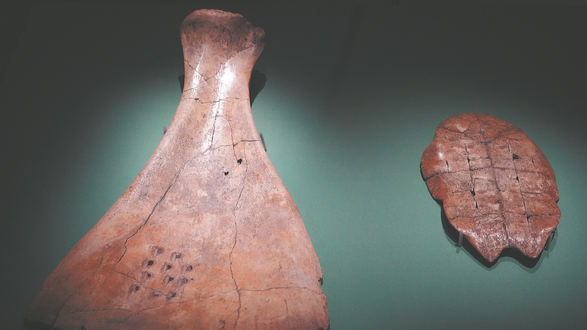
Clearly magnified oracle bone carvings are proving to be a big draw for the hundreds of thousands of visitors to the newly built Yinxu Museum in Anyang, Henan province.
Many have been amazed to see the intricate details of the strokes on the 16 oracle bones on display at the museum, which opened in February.
The 3,300-year-old Yinxu site, which is also known as the Yinxu Ruins, was listed as a UNESCO World Heritage Site in 2006 and is the location of the remains of the ancient city of Yin, one of the capitals of the late Shang Dynasty (c. 16th century-11th century BC). Yin is the first capital in Chinese history to have been documented and also substantiated by archaeological evidence.
In addition to its wealth of exquisite bronzes, the site has yielded a trove of oracle bones that were used to tell fortunes and record events. The bones are considered to be the oldest-known Chinese writing system, highlighting the endurance of Chinese civilization.
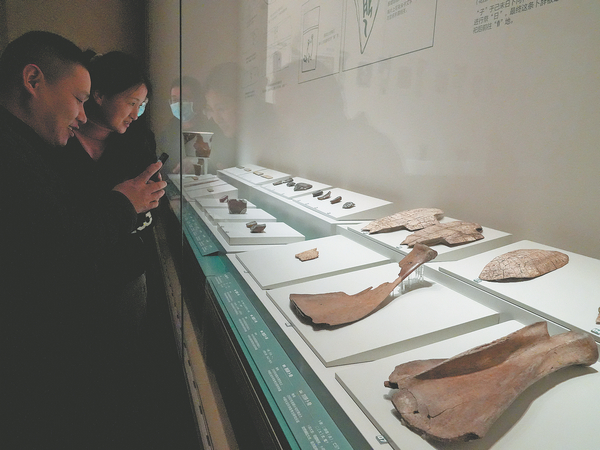
Unlike other famous ancient writing systems, such as Egyptian hieroglyphs, Babylonian cuneiform and Mayan glyphs, the character precursors on oracle bones eventually evolved into modern characters over the course of thousands of years.
In the museum's oracle bone gallery, visitors can manipulate high-precision 3D models of oracle bones on screen, which are vivid demonstrations that add depth to the overview of the Shang Dynasty provided by museum guides. Among them is Liu Mengke, who says that the Shang Dynasty was fond of divination, devoted to rituals and followed etiquette.
Some of the oracle bones from the Yinxu site turned out to be a kind of diary kept by a son of Shang Dynasty king Wu Ding.
"The bones are a vivid record of the son's daily activities and show that he resorted to divination whenever he was about to embark on something new," Liu says, adding that this included hosting sacrificial rituals, leading an army to war and organizing hunting expeditions.
A digital poster outside the gallery enables visitors to further appreciate the culture of oracle bones, allowing them access to the detailed interpretations of oracle bone scripts and a short quiz to put their knowledge to the test.
The range of questions cover different aspects of the oracle bone culture. After completing the quiz, visitors can view their results and use the information visualization function to review what they have learned, deepening their understanding of the ancient relics.
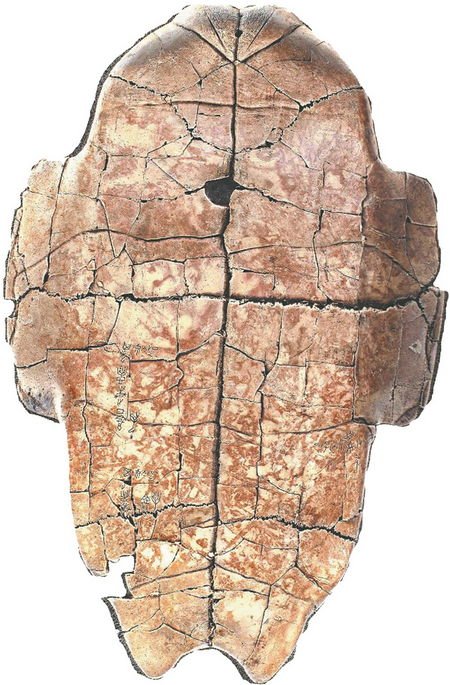
Modern tools
The digitalization of ancient animal bones and turtle shells has been undertaken by technology giant Tencent, Anyang's cultural heritage bureau, Anyang Normal University's oracle bone script information processing lab and other parties since 2022. It is part of a joint initiative to promote human-machine collaboration to aid in the deciphering and vitalization of oracle bone scripts.
At the 2024 World AI Conference and High-Level Meeting on Global AI Governance in Shanghai, the digital oracle bone co-creation center, set up by Anyang Normal University, Tencent, the Chinese Academy of Social Sciences and several other universities and research organizations, announced the open-sourcing of the world's largest multimodal oracle bone script dataset.
This dataset includes rubbings, tracings and the positions of individual characters on more than 10,000 oracle bones, along with their corresponding contexts.
Researchers are able to use this dataset to develop algorithms for oracle bone script detection, recognition, character matching and deciphering, accelerating their digitalization and intelligent research.
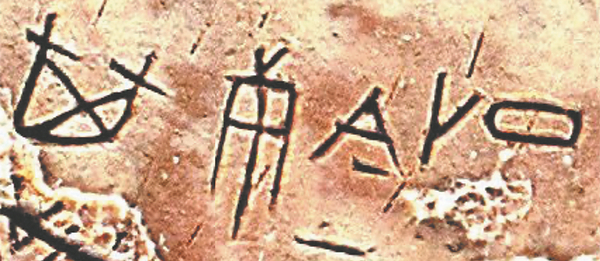
In the past, datasets have been held back by limited information, simple annotations and lack of character sets.
For example, detection datasets were only able to isolate characters without identifying them, while character recognition datasets could recognize only a few hundred characters; and some annotations were incomplete due to a lack of specialized knowledge. These issues hindered the development of algorithms for oracle bone scripts.
The digitalization initiative seeks to address those problems.
"We have now achieved several significant milestones," says Wang Chaoyang, chief architect at the digital cultural lab of Tencent's sustainable social value division, which has been a major force behind the initiative.
Currently, some 160,000 oracle bones have been unearthed and around 4,500 characters identified, of which, about 3,000 have yet to be deciphered.
Wang says that the bones deteriorate rapidly and the number of experts and scholars specialized in reading oracle bone scripts is limited.
"There is an urgent need for digital preservation and intelligent tools to accelerate the decoding process," he adds.
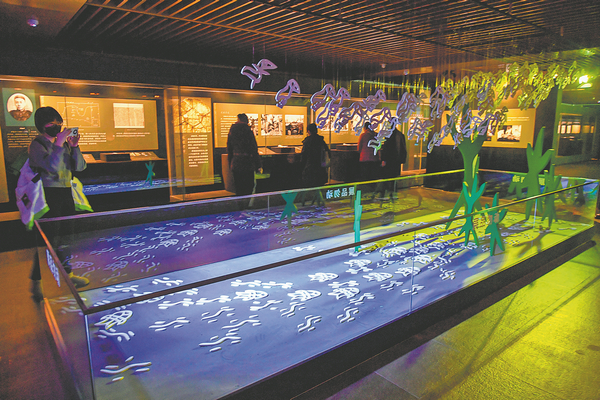
Reading between the lines
Deciphering typically takes two dimensions into account: the precursor and its actual meaning in context.
A specific oracle bone character could vary in strokes or carving style while retaining the same meaning. Researchers have discovered that the matching between a certain precursor and its variations is crucial to decoding, much like image recognition, Wang explains.
To match precursors, the first step is to create a database for matching, starting by extracting them from the oracle bones. "AI detection algorithms can accurately identify the different parts and shapes of oracle bone characters. These algorithms recognize and fill in the missing or damaged strokes, significantly speeding up the character collection process for the database," Wang says.
A micro-trace enhancement process is used to allow for the high-fidelity visualization of the start and finish of strokes, shapes and divination cracks on the bones.
"This significantly reduces storage and transmission costs, allowing terminals and devices to easily download compressed oracle bone models and quickly decode them for real-time display. The system enables six degrees of free interaction — forward or backward, up or down, left or right, pitch, yaw and roll — making it possible to zoom in and rotate the bones, giving users an immersive visual experience and promoting the research and exploration of oracle bone scripts," Wang says.
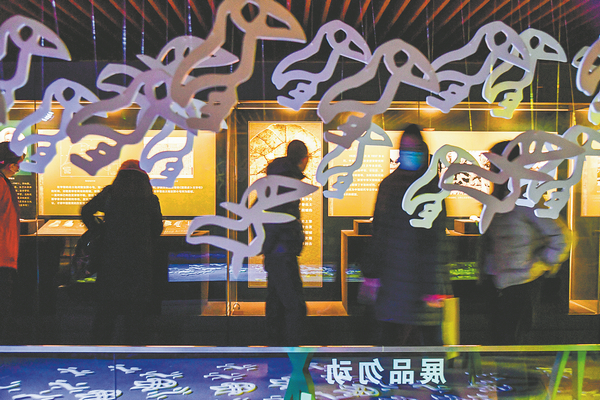
The second step focuses on making copies of single characters, with the challenge being the interference from "noise" like scratches on the bones, which can make it more difficult to recognize the white characters against their dark bone background.
"AI model generation algorithms have been used to identify and remove this 'noise' and to produce clear copies of dark characters on a white background. This process clears the way for scholars to conduct further recognition and matching work," Wang says.
Then, the copies are stored, contributing to the formation of a database.
In particular, copies of a character that appears multiple times or in different rubbings have been made to facilitate their study.
"Just like reading comprehension, we can connect the different contexts for interpretation, potentially inspiring insight into the relationships between recognized and unrecognized characters," Wang says.
The database contains 1.43 million single-character rubbings along with electronic reproductions. Each character is also mapped to its specific location in the rubbings, he adds.
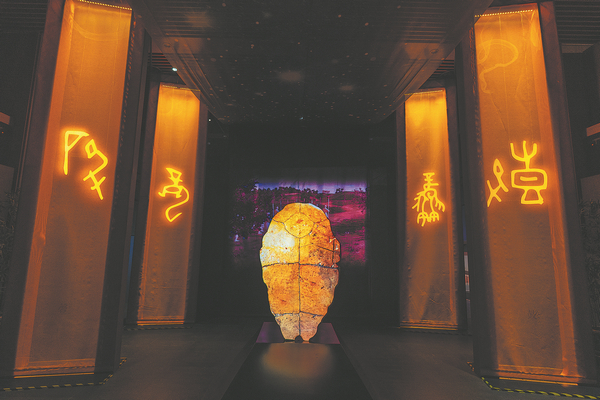
Aiding the experts
Experts are able to quickly find the images they seek by searching related characters and images.
"If they want to find a specific character, they just need to input the shape of the character. AI will automatically compare it with all the single-character reproductions in the database and provide the closest matching reproductions, along with the associated rubbings," Wang says.
So far, 150 expert-verified characters have been made available for the public to study and appreciate through a WeChat mini-program of the digital cultural lab.
Song Zhenhao, an expert in oracle bone scripts from the Chinese Academy of Social Sciences, says that they are a valuable part of Chinese civilization. Research in this area not only sheds light on ancient Chinese history but also provides crucial evidence for the origins of modern Chinese characters and the study of the language.
The use of AI technology holds the promise of accelerating the deciphering of oracle bone scripts, potentially resolving long-standing scholarly questions, he says, adding that he would like to see more research institutions and scholars join this endeavor to expand its research horizon.
Wu Yunsheng, vice-president of cloud computing service provider Tencent Cloud, says that AI is having a transformative impact on science, including oracle bone research.
"We are looking forward to collaborating with more technology teams to explore the use of AI technology in a variety of scenarios, and to providing further support for oracle bone scripts research," Wu says.
Contact the writer at yangfeiyue@chinadaily.com.cn


